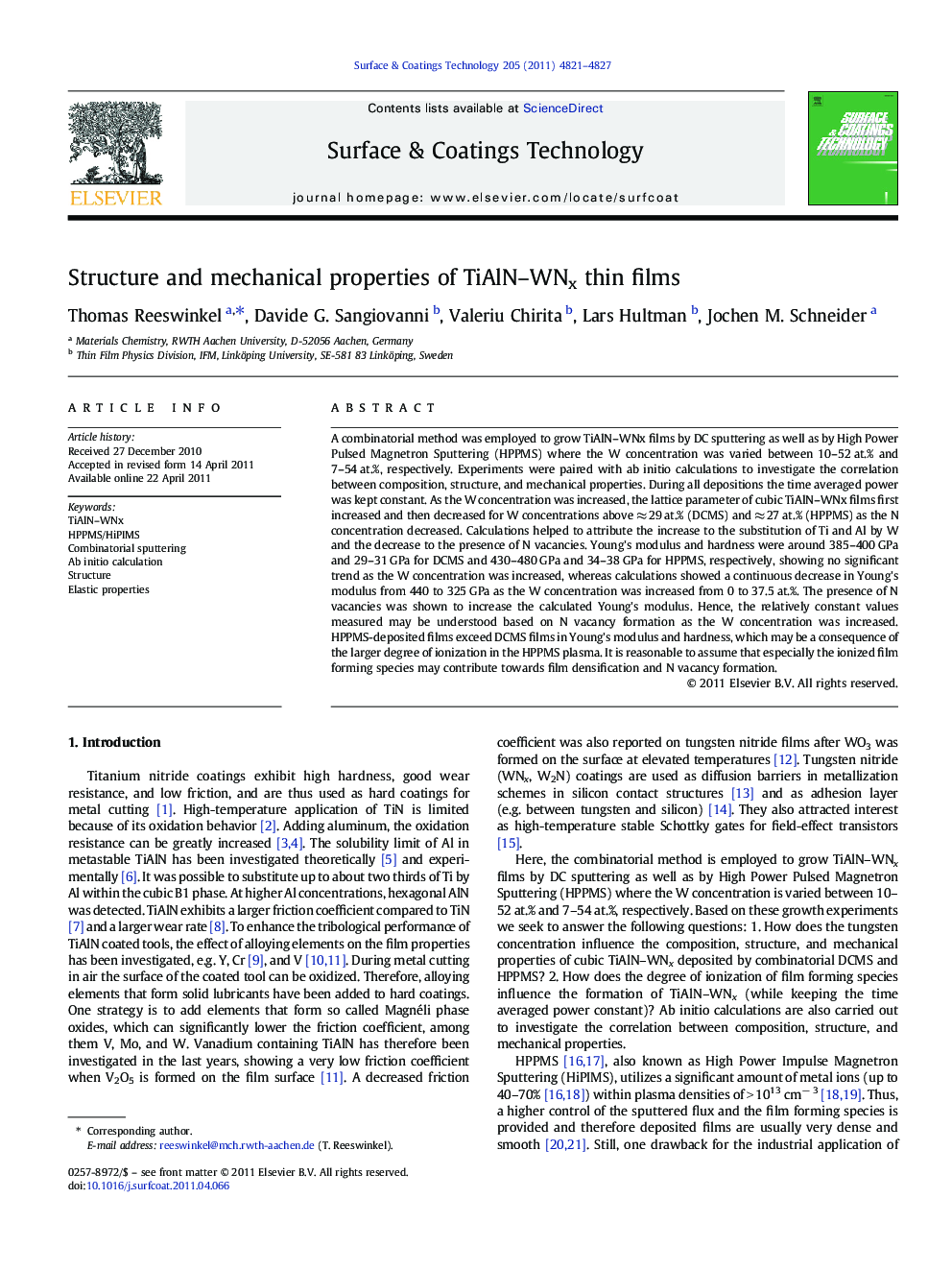| کد مقاله | کد نشریه | سال انتشار | مقاله انگلیسی | نسخه تمام متن |
|---|---|---|---|---|
| 1658643 | 1008351 | 2011 | 7 صفحه PDF | دانلود رایگان |

A combinatorial method was employed to grow TiAlN–WNx films by DC sputtering as well as by High Power Pulsed Magnetron Sputtering (HPPMS) where the W concentration was varied between 10–52 at.% and 7–54 at.%, respectively. Experiments were paired with ab initio calculations to investigate the correlation between composition, structure, and mechanical properties. During all depositions the time averaged power was kept constant. As the W concentration was increased, the lattice parameter of cubic TiAlN–WNx films first increased and then decreased for W concentrations above ≈ 29 at.% (DCMS) and ≈ 27 at.% (HPPMS) as the N concentration decreased. Calculations helped to attribute the increase to the substitution of Ti and Al by W and the decrease to the presence of N vacancies. Young's modulus and hardness were around 385–400 GPa and 29–31 GPa for DCMS and 430–480 GPa and 34–38 GPa for HPPMS, respectively, showing no significant trend as the W concentration was increased, whereas calculations showed a continuous decrease in Young's modulus from 440 to 325 GPa as the W concentration was increased from 0 to 37.5 at.%. The presence of N vacancies was shown to increase the calculated Young's modulus. Hence, the relatively constant values measured may be understood based on N vacancy formation as the W concentration was increased. HPPMS-deposited films exceed DCMS films in Young's modulus and hardness, which may be a consequence of the larger degree of ionization in the HPPMS plasma. It is reasonable to assume that especially the ionized film forming species may contribute towards film densification and N vacancy formation.
Research Highlights
► TiAlN–WNx thin films deposited by combinatorial DCMS and HPPMS.
► TiAlN–WNx investigated by ab initio calculations.
► Investigate correlation between composition, structure, and mechanical properties.
► Lattice parameter corresponds to W concentration and N vacancies.
► Elasticity understood by effects of rules of mixture and N vacancy formation.
Journal: Surface and Coatings Technology - Volume 205, Issue 20, 15 July 2011, Pages 4821–4827